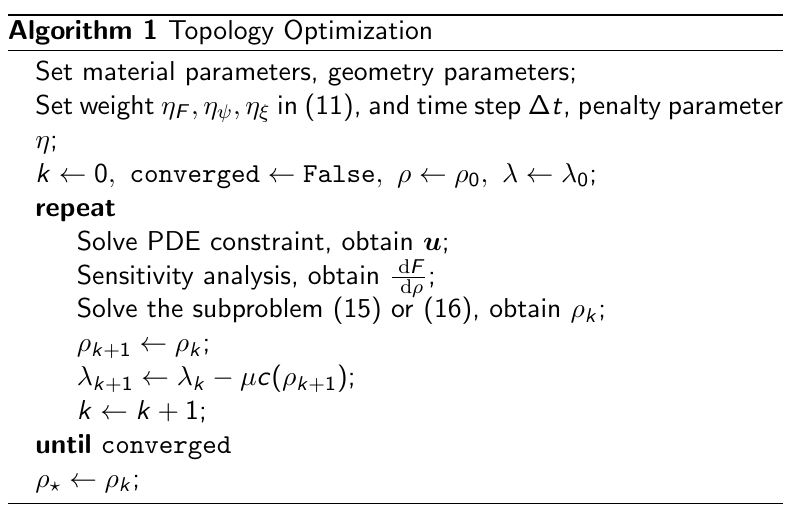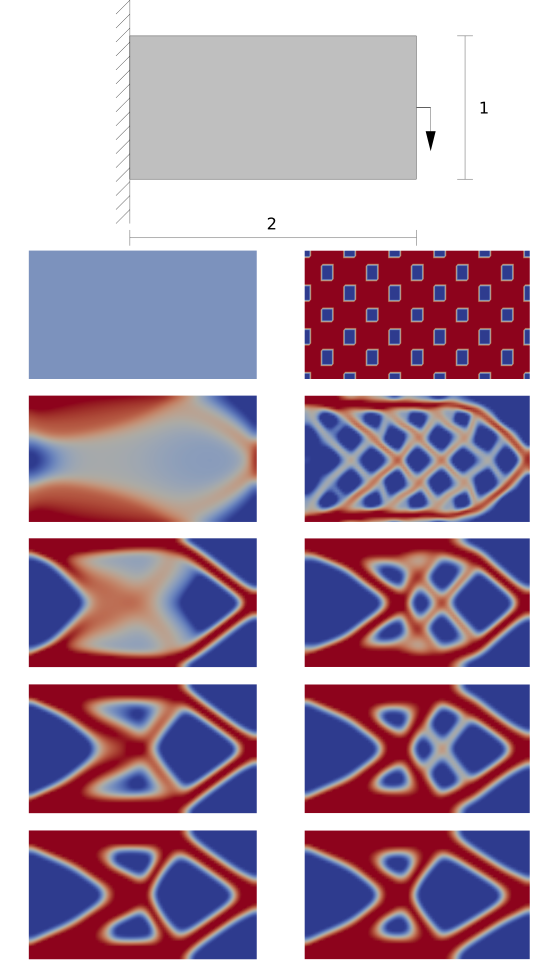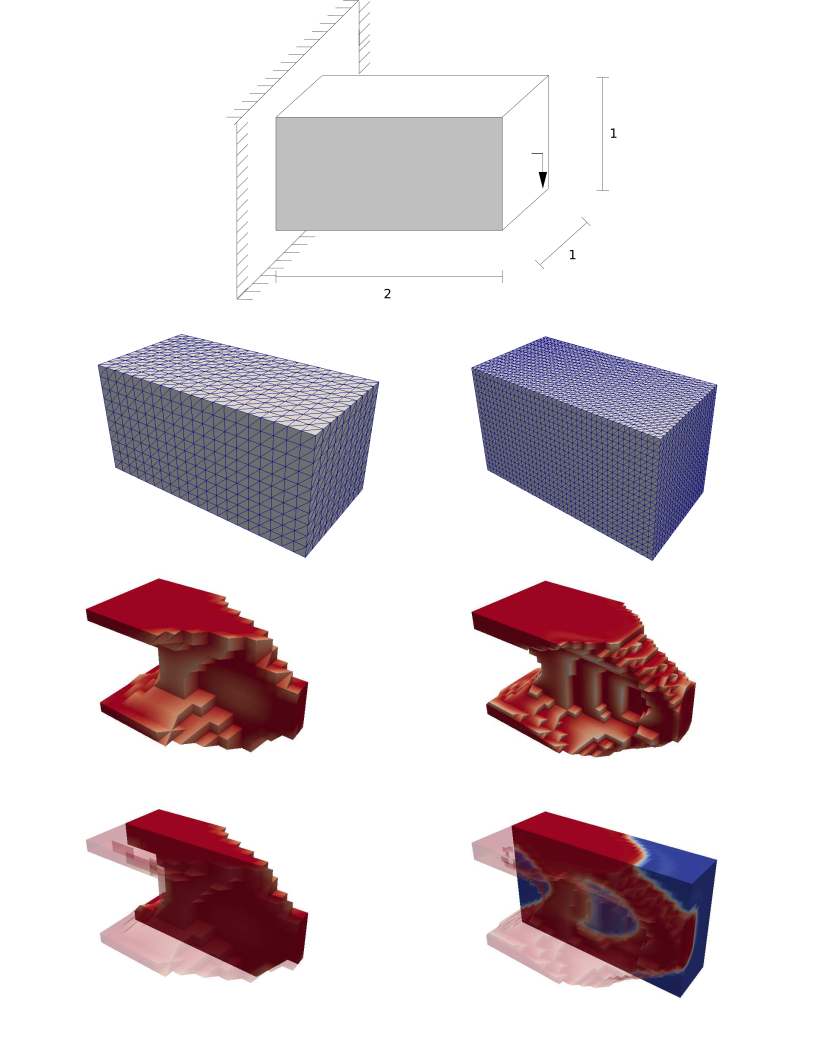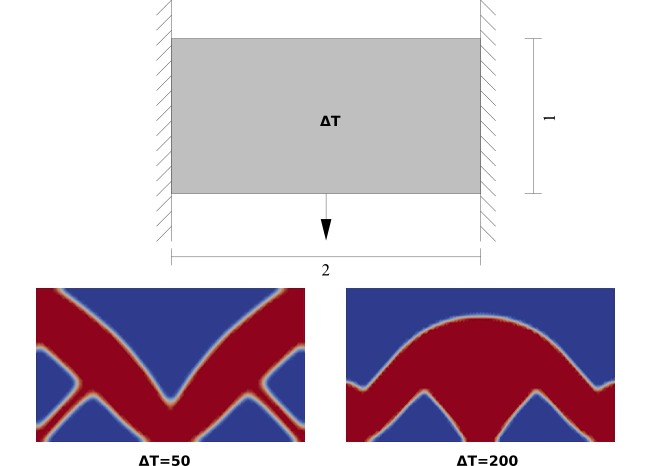Phase-field approaches in Topology Optimization
In a Topology Optimization problem, we often have a design variable
Alternatively, we can create an evolution equation for
Here, the math seems a little bit overwhelming, but the evolution equation is simply a diffusion-reaction equation (also an Allen-Cahn equation). The source term is composed of the double-well function
Now we only miss the PDE constraint. This is accomplished by a sensitivity analysis (adjoint problem). The derivation of ajoint problem is skipped here. A good reference is dofin-adjoint documentation.
algorithm
The full solving algorithm is presented as follows.

This algorithm is implemented in an open-source code FEniCS.
simulation examples
The first working example is a standard one, namely optimization the compliance of a cantilever beam. Various tests are carried out for this simple case to validate the algorithm and clarify the coefficient parameters.

The solution in 3D is also possible. Finer mesh ends with geometry with more details.

We can also solve a therm-mechanical problem presented below. We observe a significant geometry change due to the increase of temperature change. In other words, if the structure expansion is magnified, we need a thicker lower strut to maintain the stiffness. This result is consistent with the result in literature.
